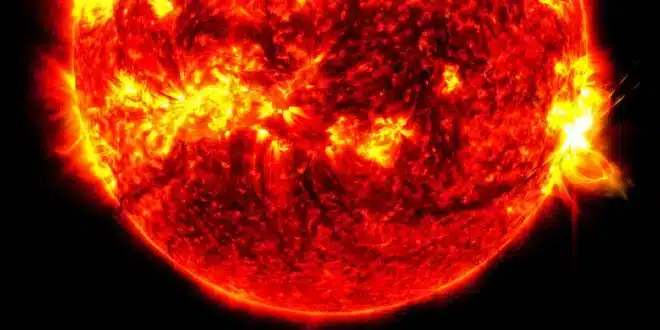On Tuesday, May 14, the sun unleashed its most powerful solar flare since 2005, shortly after severe solar storms had illuminated the skies with vibrant northern lights in various locations.
The National Oceanic and Atmospheric Administration’s (NOAA) Space Weather Prediction Center reported that the solar flare peaked just before 1 pm ET and was classified as an X-class flare, specifically rated X8.7. X-class solar flares are the strongest, described by NASA as “giant explosions on the sun that send energy, light, and high-speed particles into space.”
The flare was categorized as an R3 or “strong” event, which could have caused widespread blackouts of high-frequency radio communications for nearly an hour on the sunlit side of Earth. It might have also disrupted low-frequency navigation signals during this period.
The flare originated from sunspot 3664, which, when combined with another sunspot named 3663, is significantly larger than Earth. The NOAA noted that as of last Thursday, sunspot 3664 had been growing and becoming more magnetically complex, increasing the likelihood of solar flares.
Prior to this major flare, two other solar flares, rated X1.7 and X1.2, had erupted, though they were not expected to have a significant impact on Earth.
Despite the flare’s intensity, officials expressed no concern about a coronal mass ejection (CME) accompanying it. Previous CMEs have triggered geomagnetic storms, such as the rare extreme storm over the weekend that brought the northern lights to unusually low latitudes and disrupted GPS systems crucial for farmers during planting season.
“Due to its location, any CME associated with this flare will likely not have any geomagnetic impacts on Earth,” stated the Space Weather Prediction Center.
Earth is currently in Solar Cycle 25, which began in 2020. Doug Biesecker, a solar physicist at NOAA’s Space Weather Prediction Center, noted, “While we are not predicting a particularly active Solar Cycle 25, violent eruptions from the Sun can occur at any time.”


